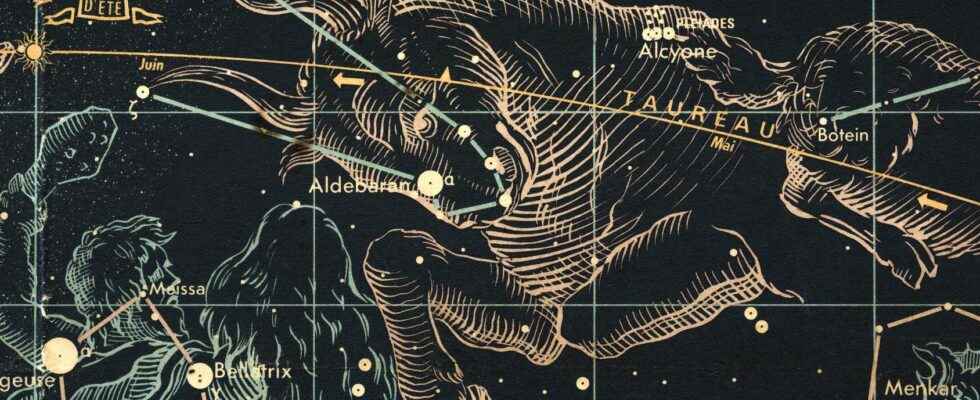Taurus is one of the oldest constellation of the sky. She represented for the Sumerians, the celestial Bull (GUD.AN.NA) of the epic of Gilgamesh. Taken up by the Greeks and then, later, by the Romans, this figure has survived the millennia down to us. It is quite possible that, by its shape, it is true, evocative of a bull — or of a aurochaccording to cultures and times (from India to Crete…) — that this configuration ofstars has been so named since very distant times, long before the first written traces that have come down to us from Mesopotamia.
Crossed by the Sun — from an earthly perspective — during the month of May, Taurus (Taurus) is one of the thirteen constellations of zodiac — the term zodiac means, let us recall, the “circle of animals”.
The appearance of Taurus in the sky
We recognize Taurus in the sky thanks, on the one hand, to the V-shape of the cluster of young stars Hyades (“Those that make it rain”), depicting the head of the animal and, on the other hand, to another swarm of very young stars: the Pleiades.
The brightest star in the constellation is Aldebaran, theeye red-orange of Taurus! Near the star El Nath which marks the end of one of its horns, it is possible to observe in an instrument the crab nebula (Messier 1, M1), the remains of a supernova that exploded in the year 1054.
The constellation of Taurus rises after sunset, above the northeast, in the middle of thefall. In spring, it is the opposite, it disappears under the northwest horizon at the beginning of the night.
Of them meteor swarms are associated with Taurus: the Southern Taurids, and the Northern Taurids, active from September 25 to November 25.
Taurus in Greek Mythology
In Greek mythology, the constellation of Taurus represents the bovine form that Zeus took during the abduction of Europa. Another legend says that the constellation represents the white bull that Poseidon sent to Minos.
Another version also says that Zeus took on the appearance of a Bull to defend the Pleiadesalso named by the Greeks, the Seven Daughters of Atlas, chased by the hunter Orion.
You will also be interested
[EN VIDÉO] Crab Nebula: relive its terrible supernova explosion Here, replayed, is the supernova explosion that occurred in the year 1054 in the constellation of Taurus. The Earthlings of the time saw a new star sparkle day and night for several months. Today, its remnants, dubbed the Crab Nebula, continue to expand. We see them here observed by five large instruments, working in different wavelengths, in false colors.
Interested in what you just read?
